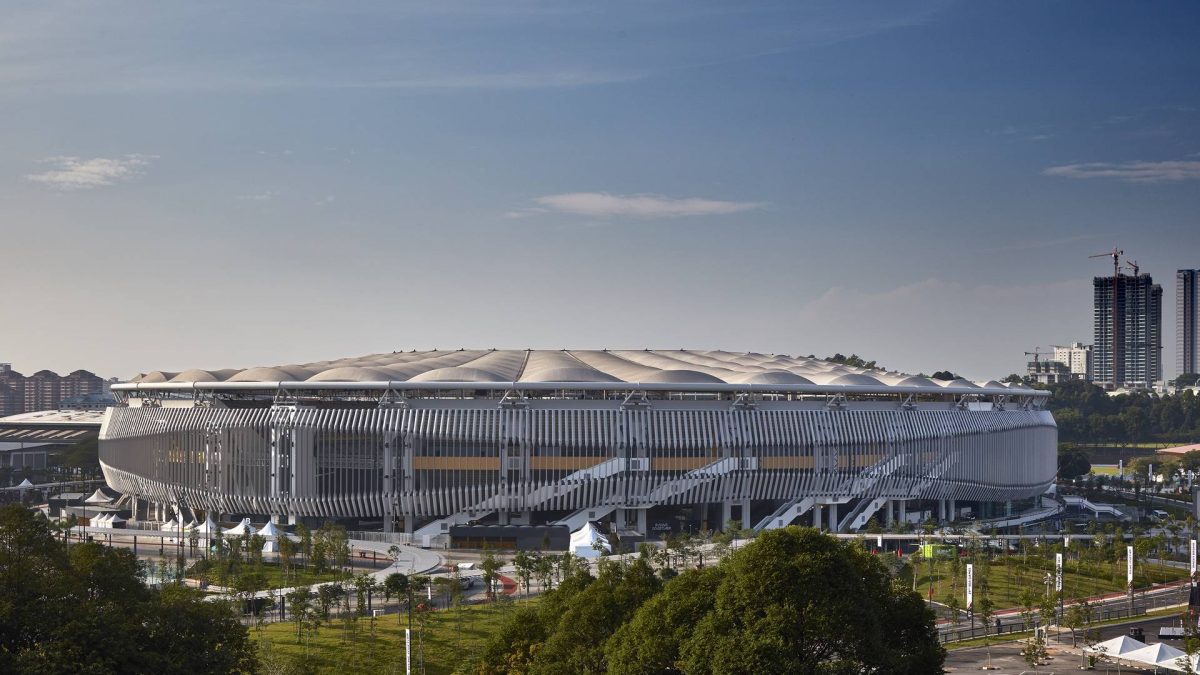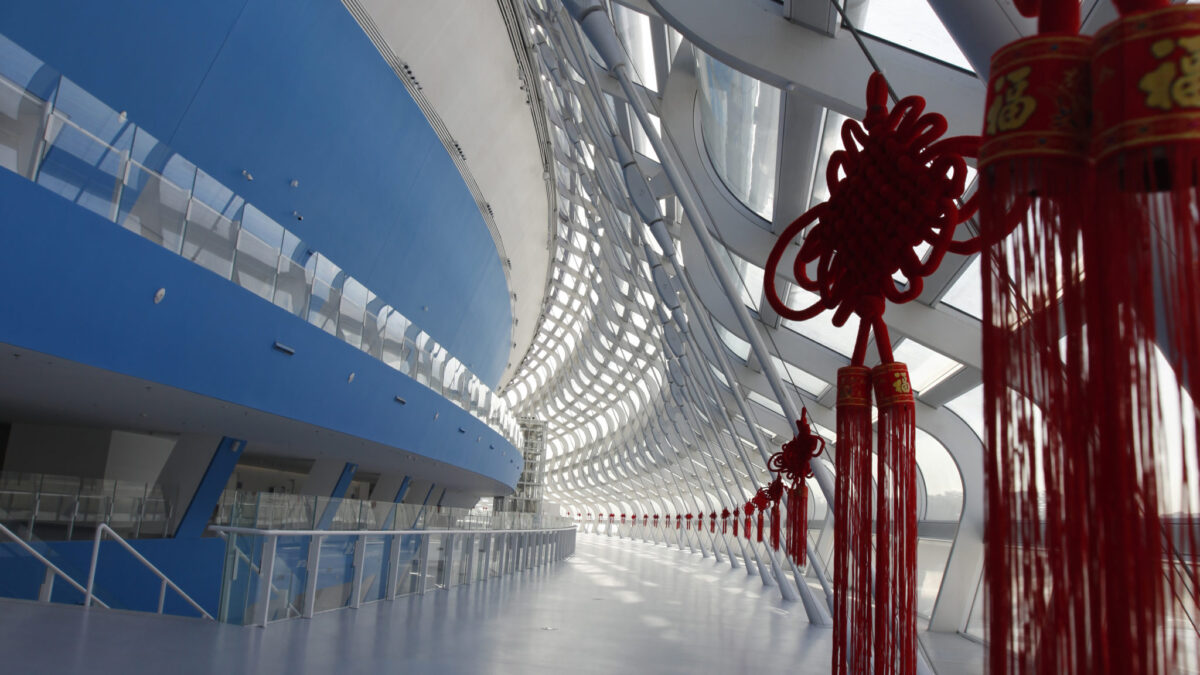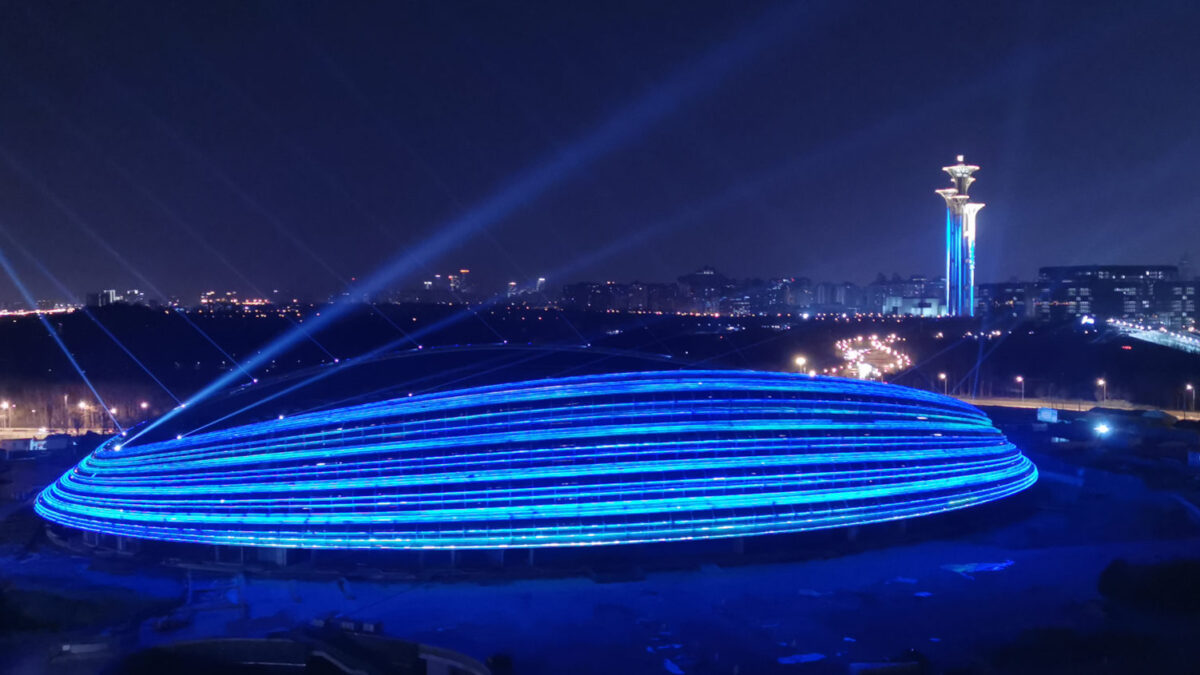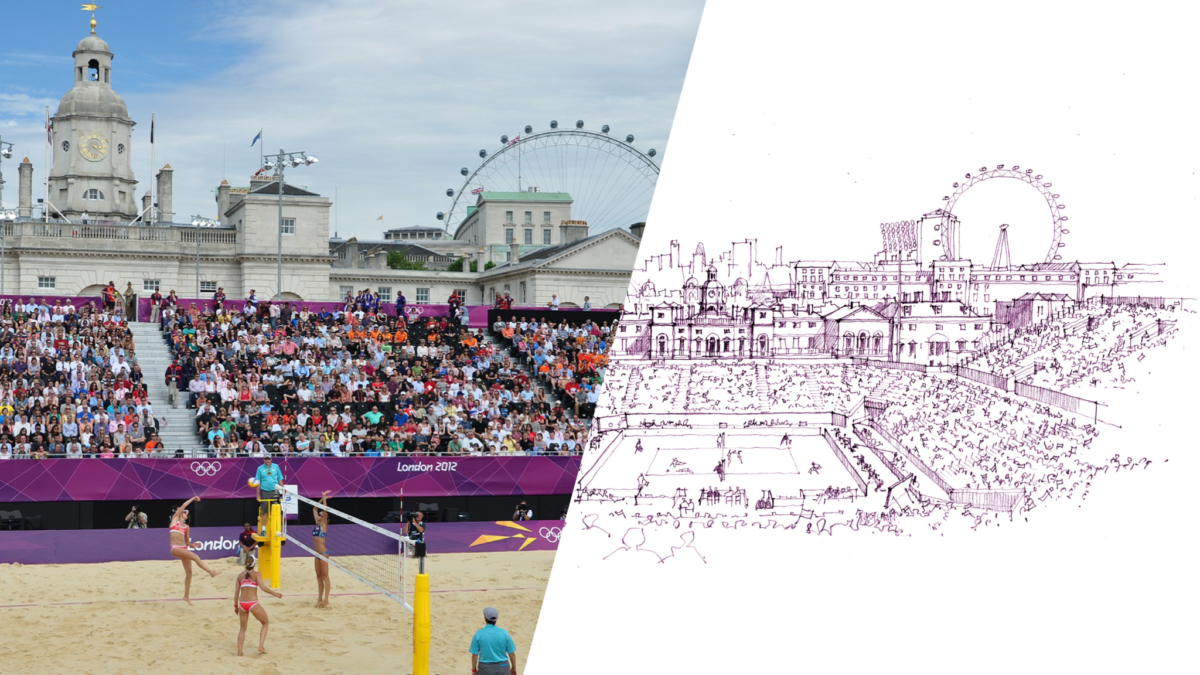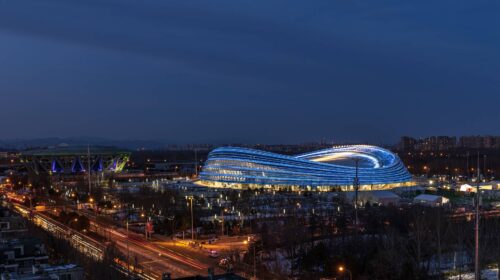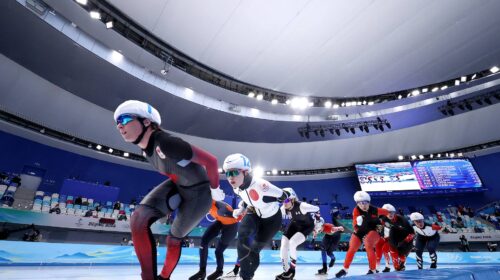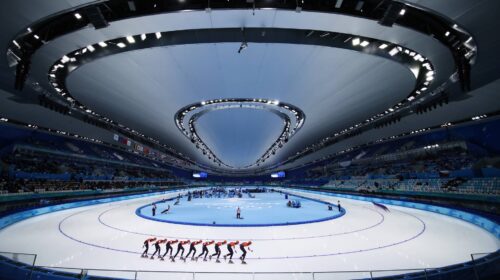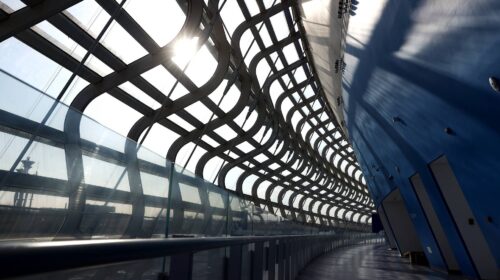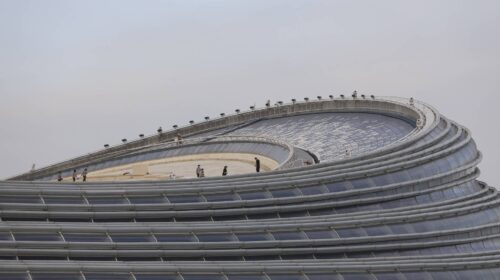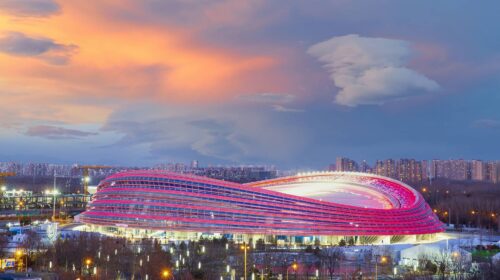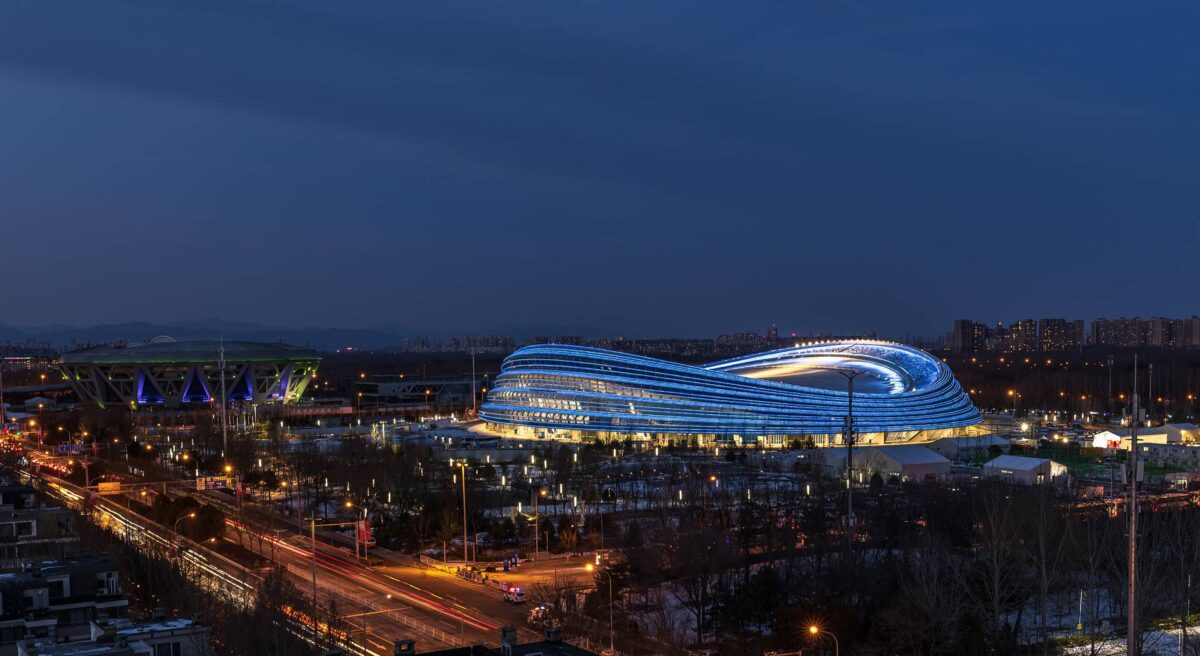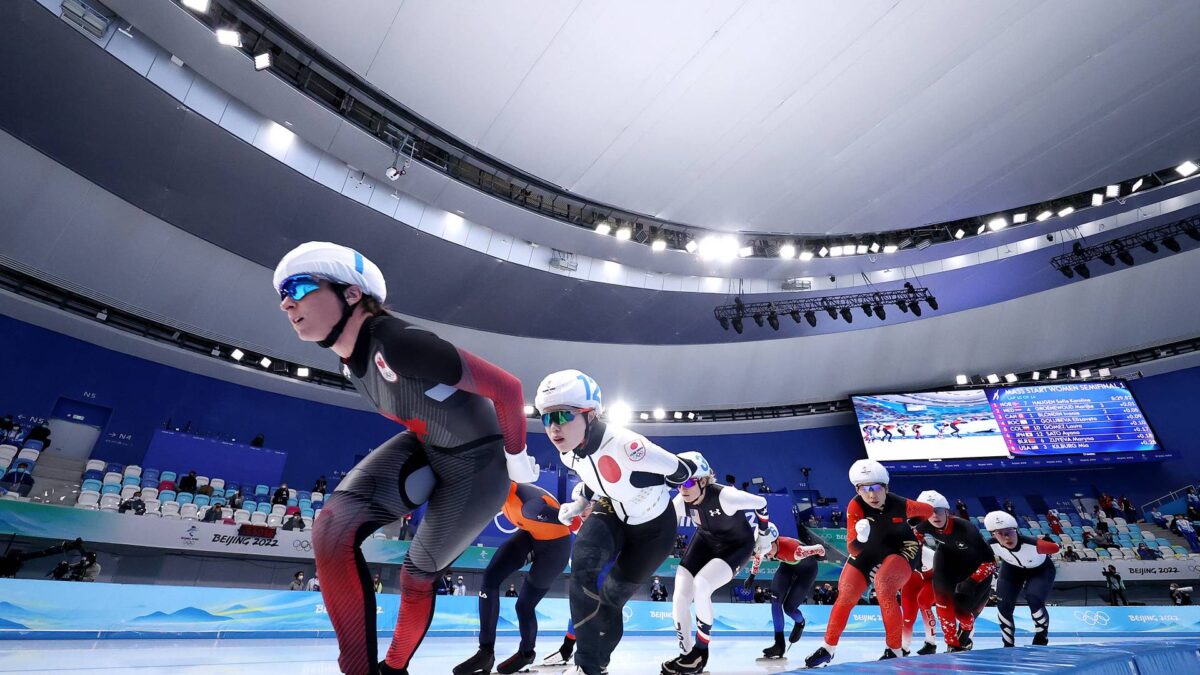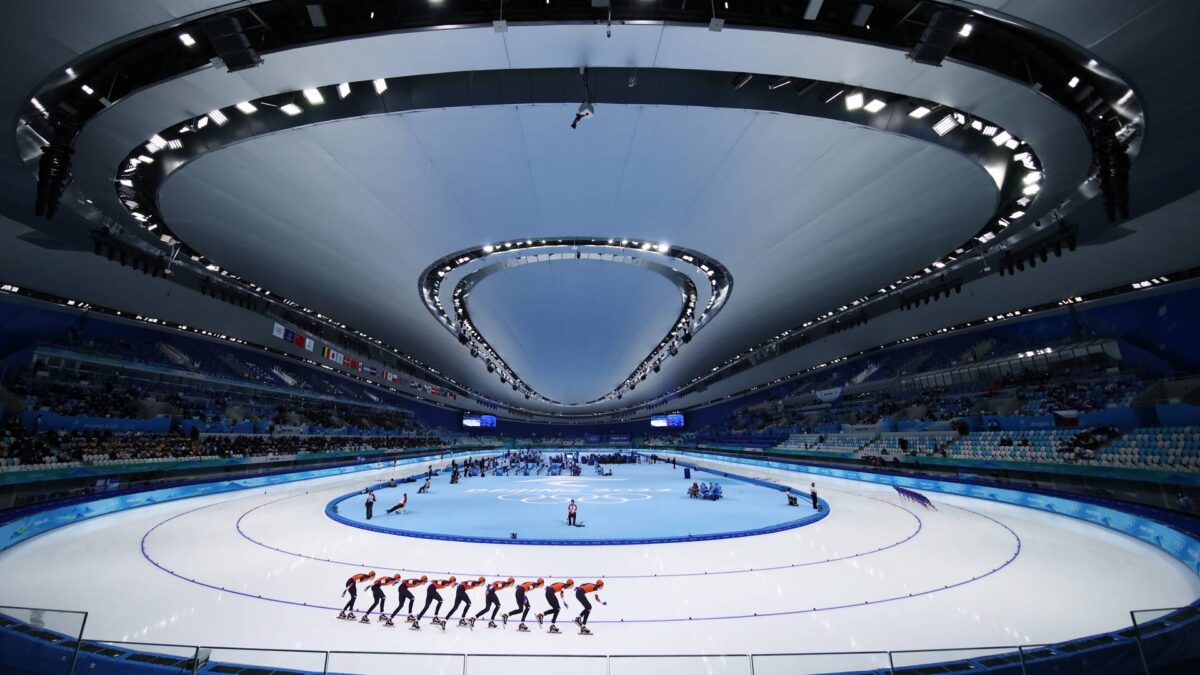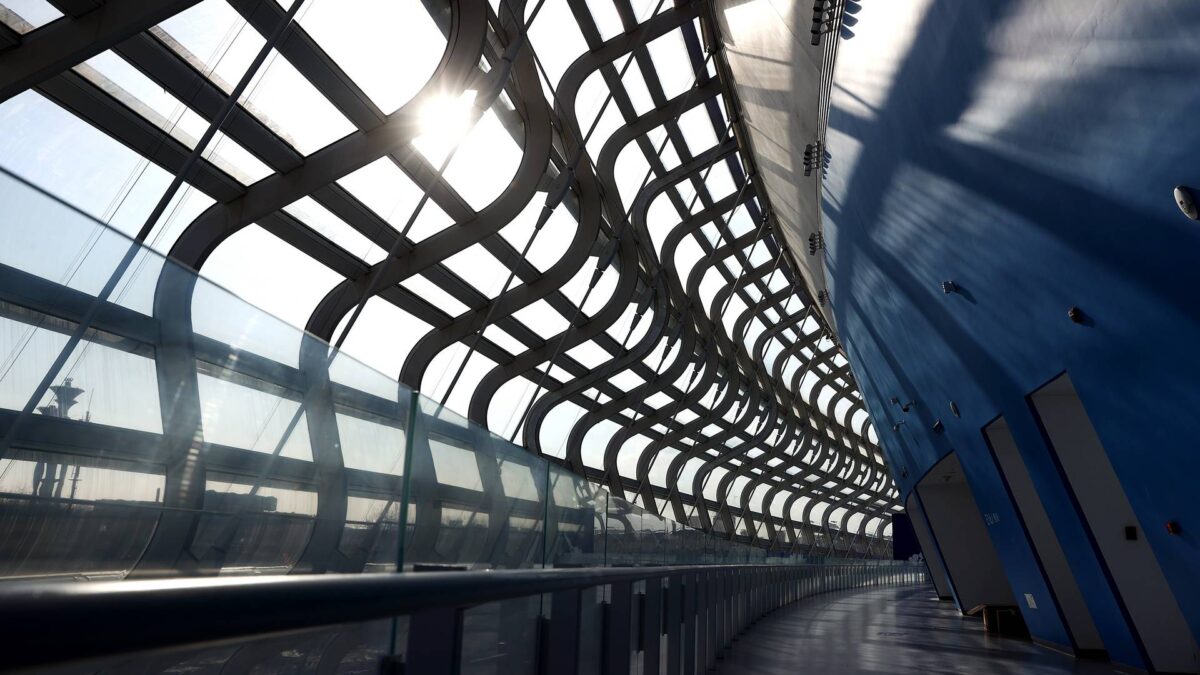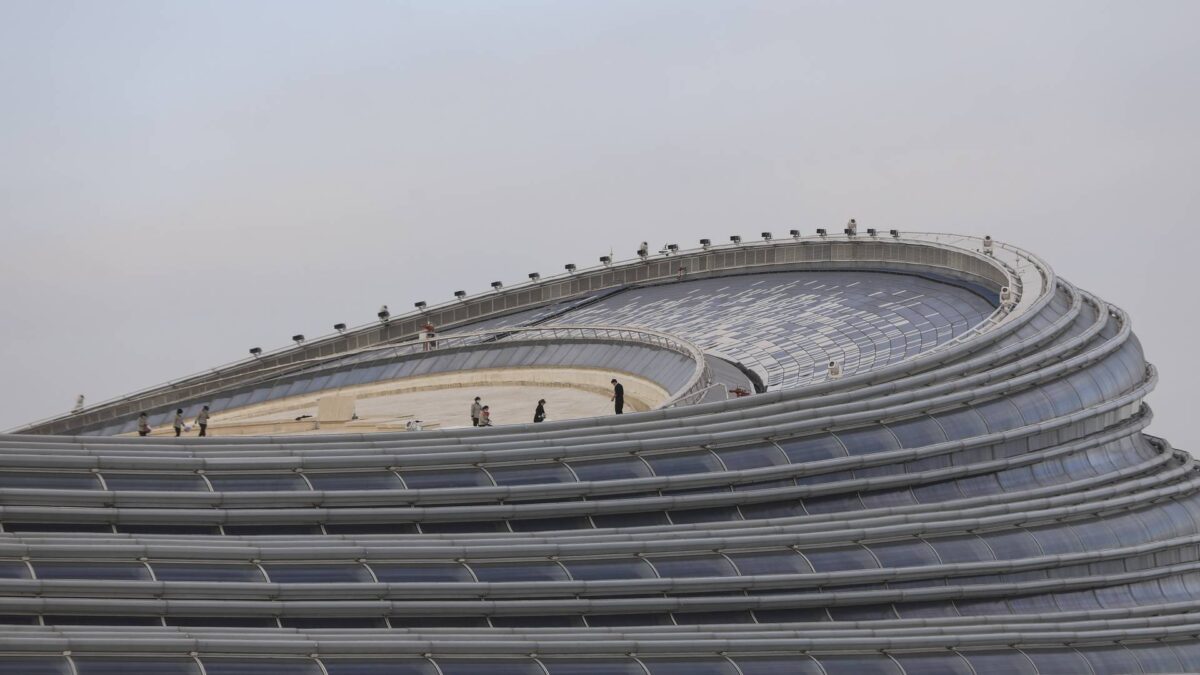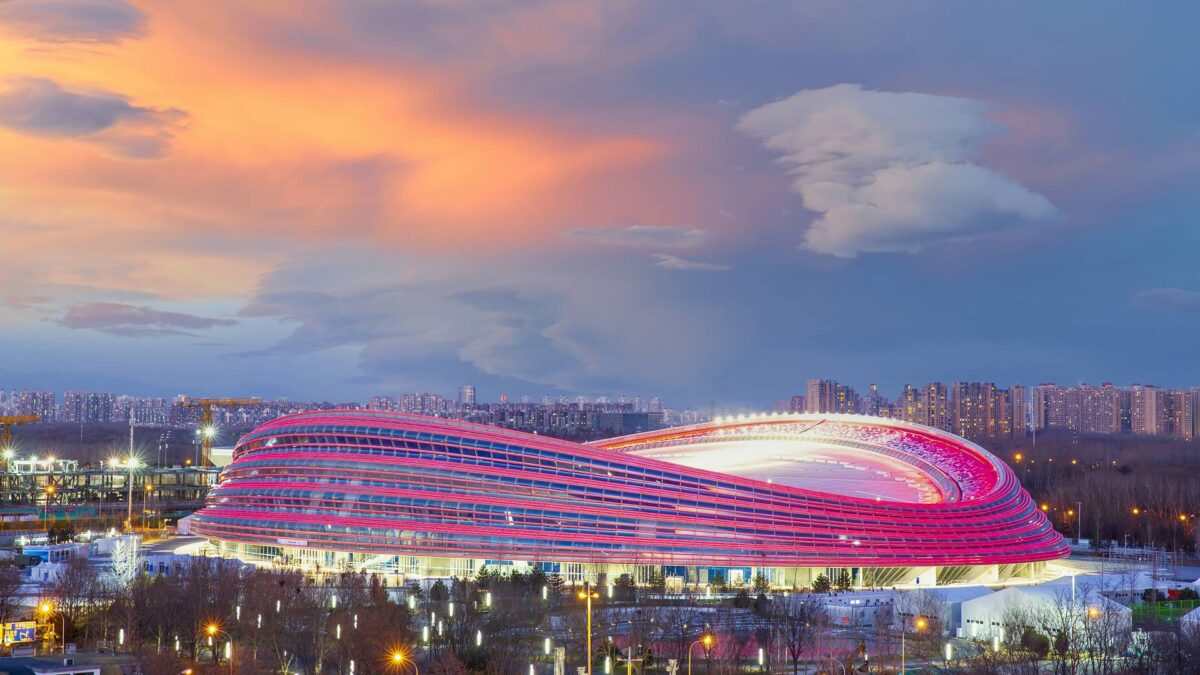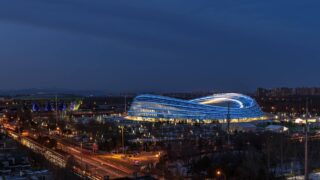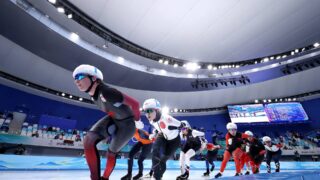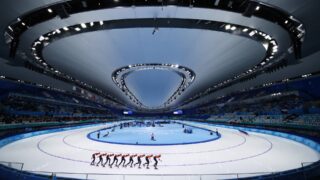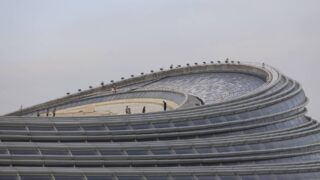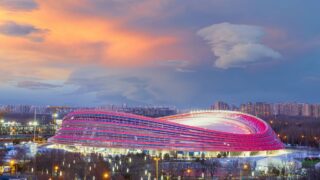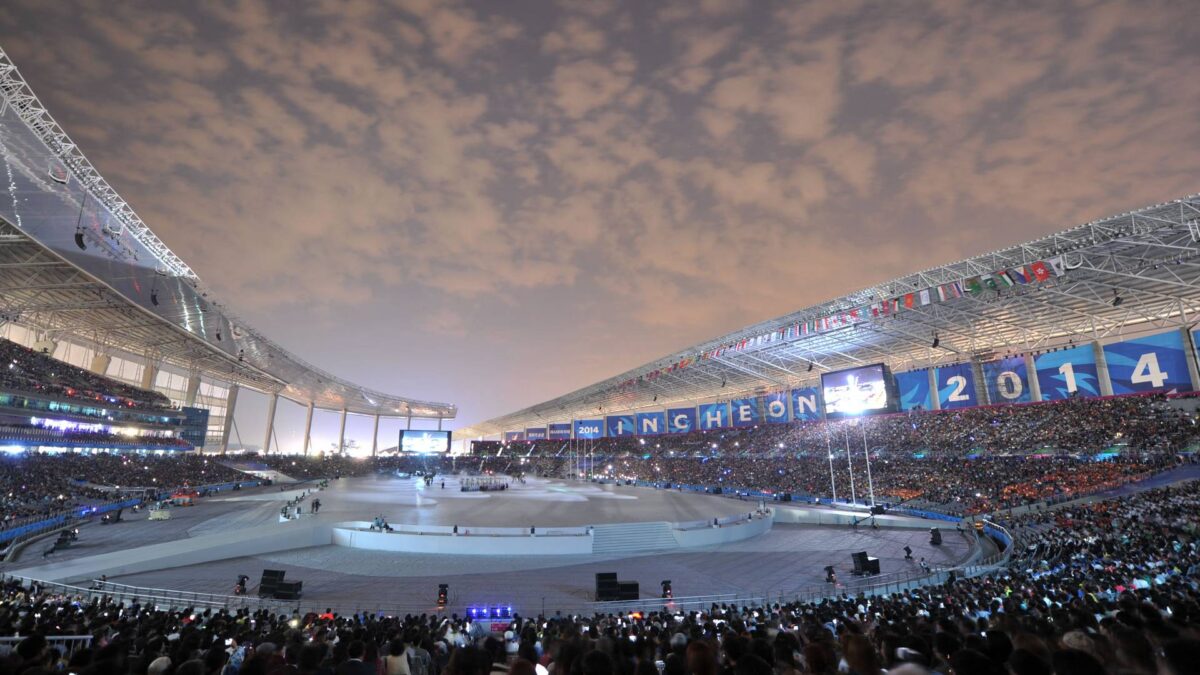
National Speed Skating Oval
Architecture
-
Client
Beijing State Asset Management
-
Total Capacity
12,000
-
Disciplines
-
Collections
Populous was selected to design the prestigious National Speed Skating Oval (NSSO, also known as the ‘Ice Ribbon’) in Beijing, following a rigorous worldwide design competition. It became the city’s iconic centrepiece for the 2022 Winter Olympic and Paralympic Games. This win consolidated Populous’ unparalleled Olympic experience, meaning we were involved in our 12th Olympic and Paralympic Games.
Our role in the competition process involved the management of a multitude of stakeholders across five countries and three offices to complete the full schematic design for the ‘Ice Ribbon’ in just 12 weeks. The facade was forged through several concepts and many iterations to reflect the inspiring nature of speed skating. In total, 66 firms took part in the competition including a large number of international practices.
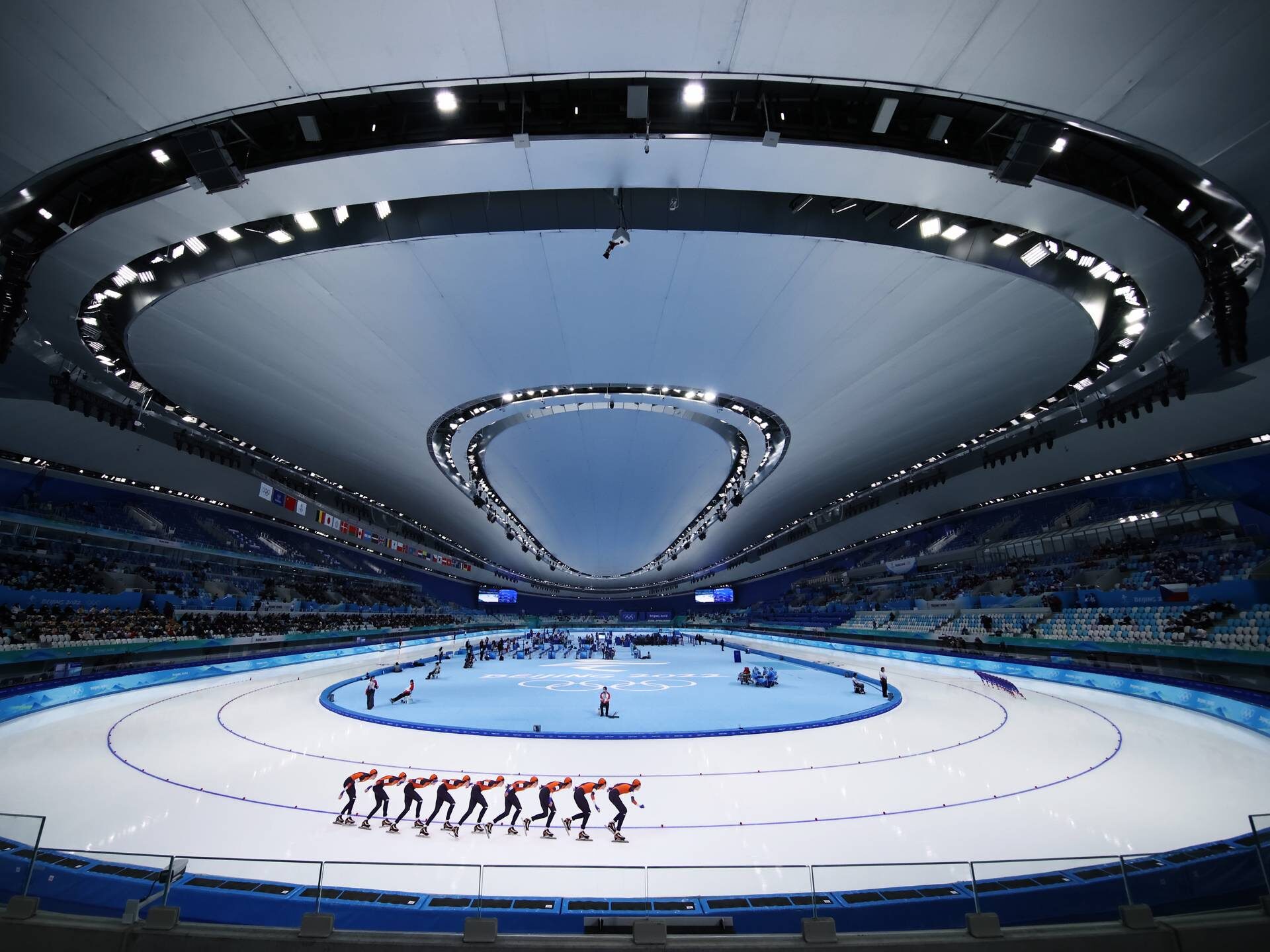
The largest speed skating venue in Asia, the Oval complements the existing iconography of the Olympic Park, sitting alongside the majestic steel structure of the ‘Bird’s Nest’ and the dynamic membrane structure of the ‘Water Cube.’
Before the games were even underway, it was clear that a new Olympic icon had been created. A facade of 22 separate light strands flows up and around the Oval to a height of 33.8 metres, mimicking the precise racing lines drawn by the skaters inside, celebrating the elegance, pace and dynamism of the sport. At night, each strand lights up, shifting colors in an endless array of configurations that draws crowds.
-
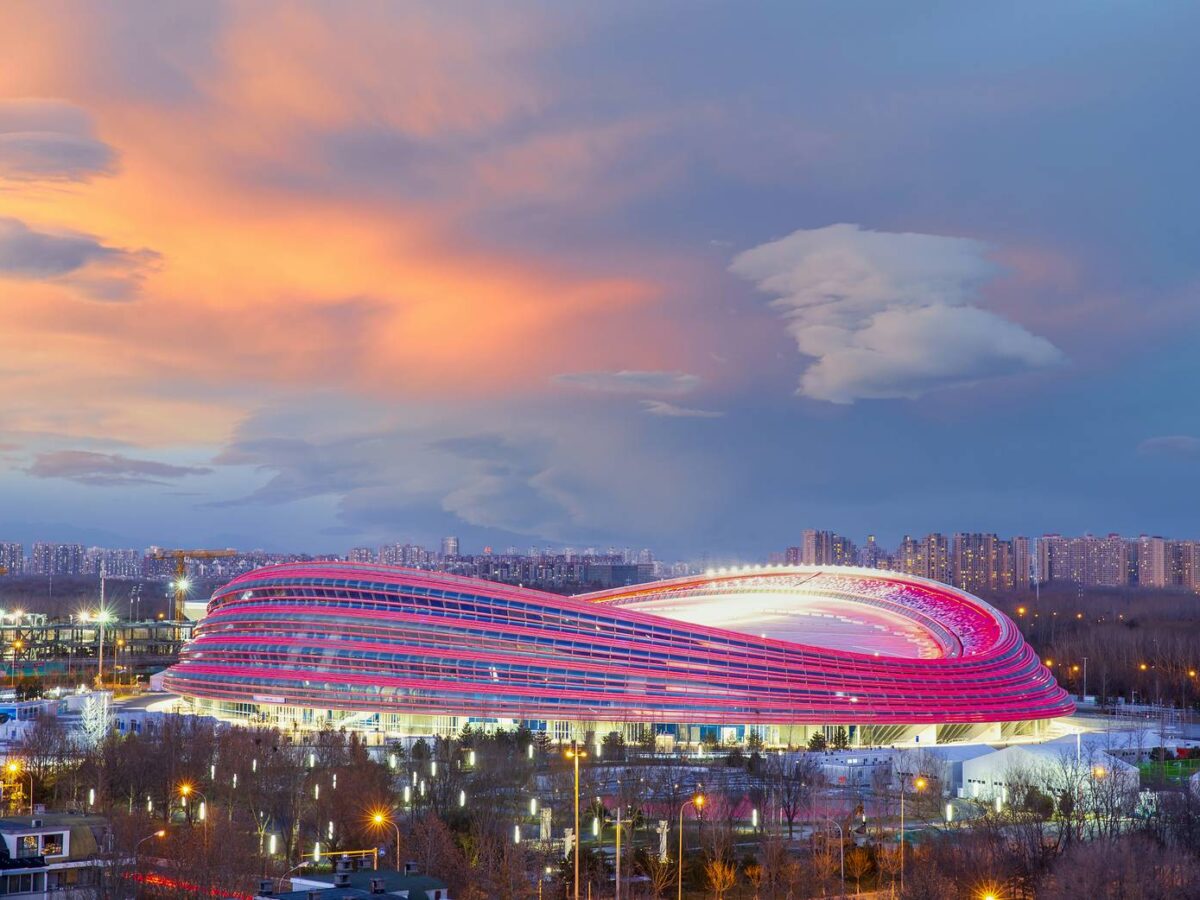
External View Of National Speed Skating Oval (NSSO) -
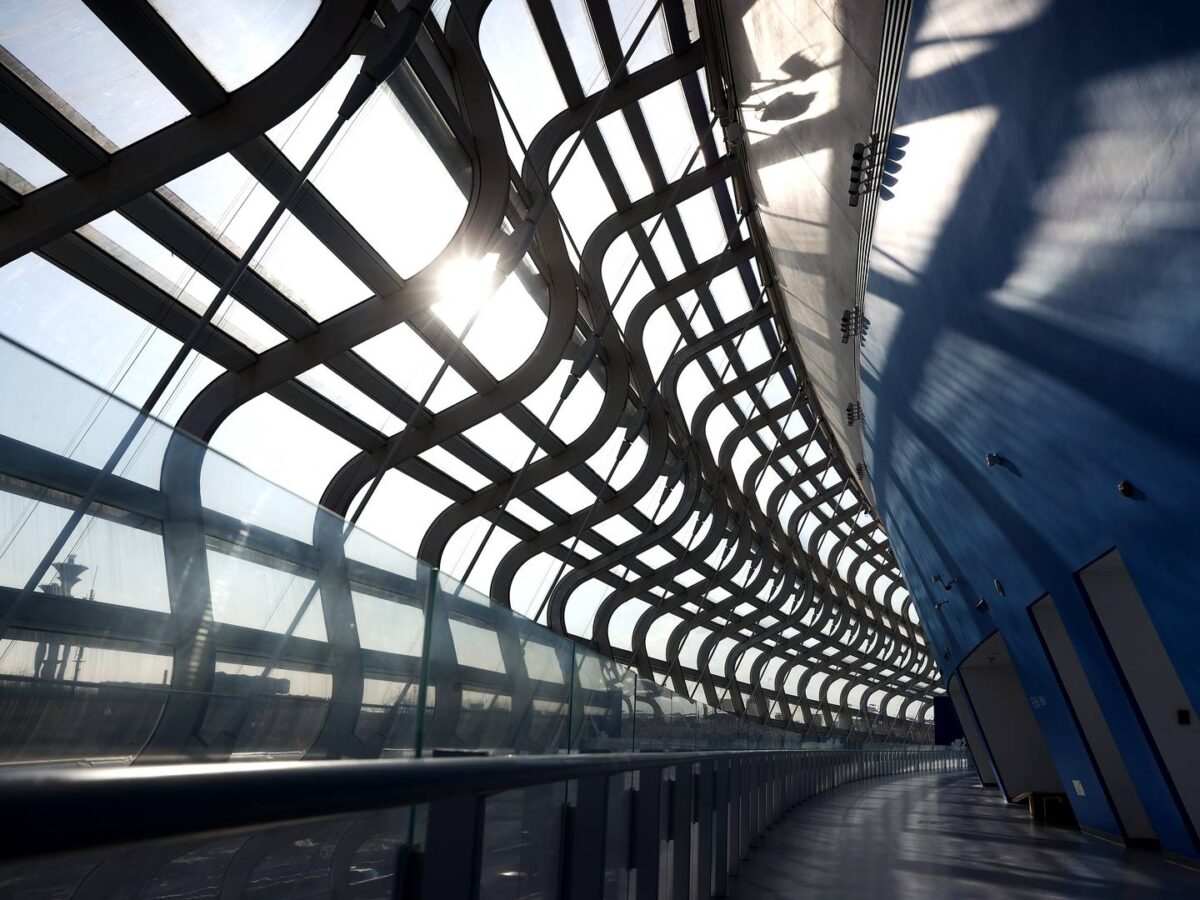
Interior View Of The NSSO Facade -
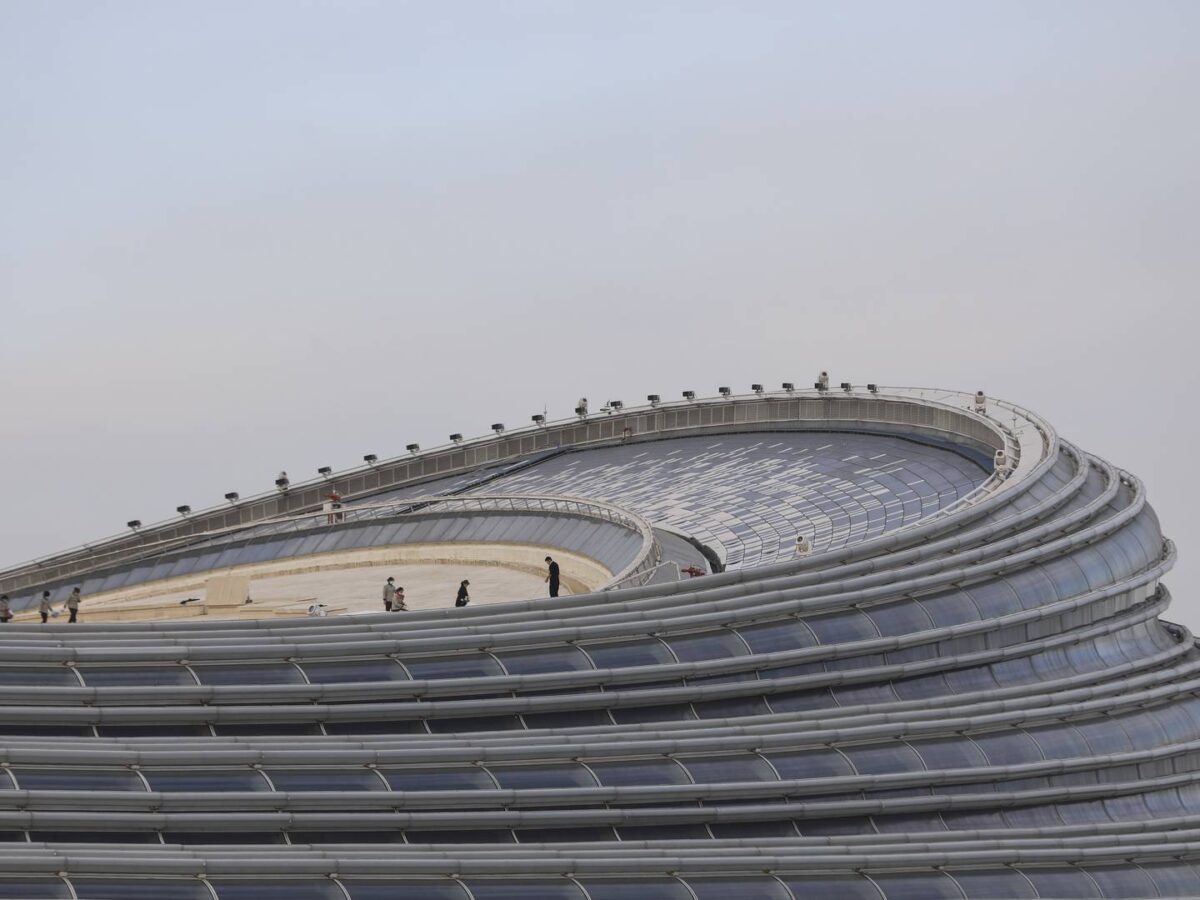
Detailed View Of The NSSO Structure
The Oval is one of the first venues in the world to use carbon dioxide transcritical direct cooling technology for making the ice. Not only does this system reduce the building’s carbon emissions, it also makes it possible to achieve a temperature difference of less than 0.5C across the entire surface of the ice, which results in a track that is faster and stronger.
During the Games, the Oval accommodated 12,000 spectators, with 8000 permanent seats and 4000 temporary seats. Spectators packed out the stands, charging the atmosphere from seats positioned right up against the track. They were able to see every movement and hear every sound of the skates gliding over the ice. And once all the medals had been won and the Games concluded, the Oval was transformed into a public skating ring, ensuring its legacy in developing the next generation of Chinese athletes.
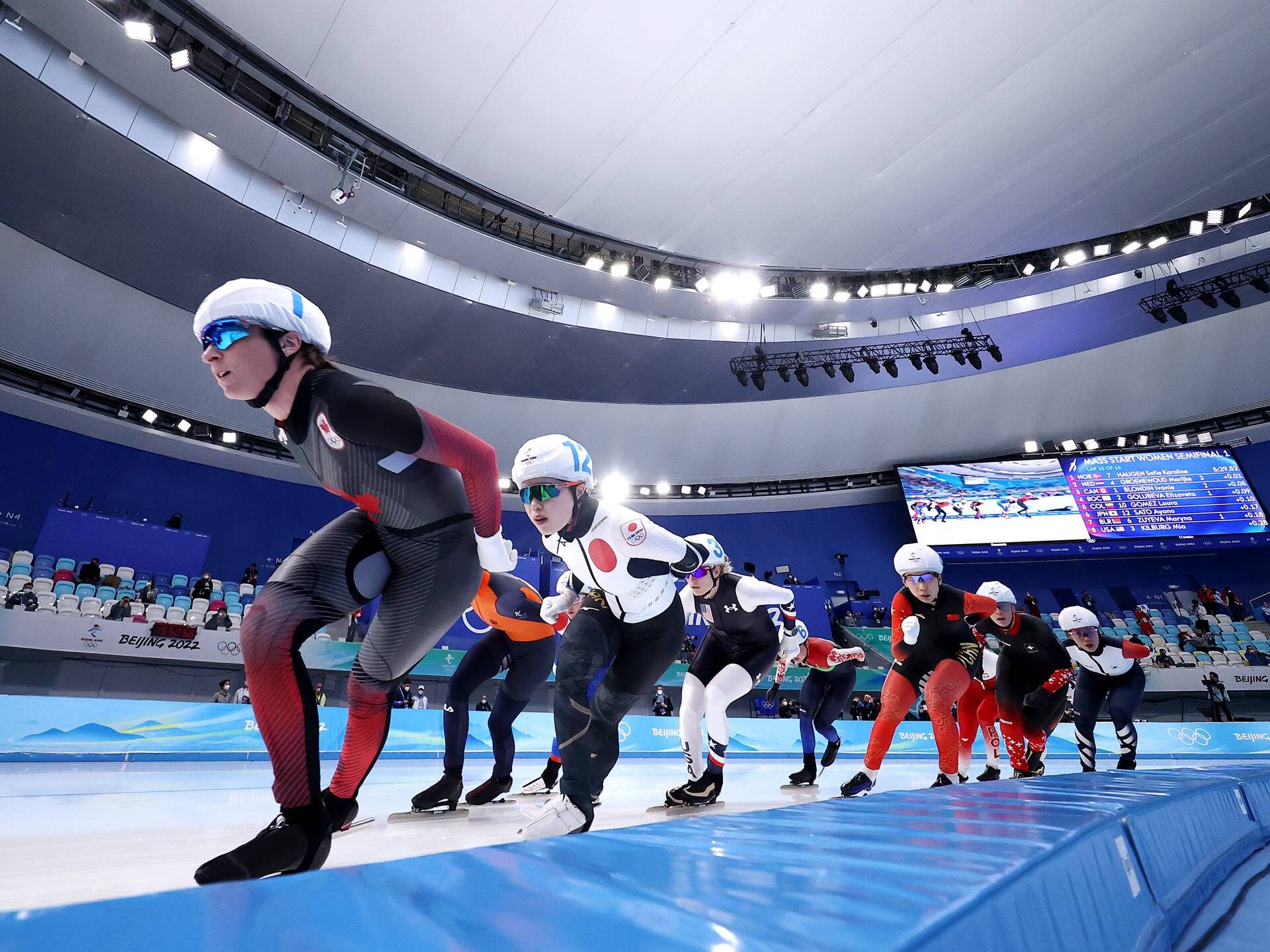
-
2022 - 2023
- China Construction Industry Association Luban Prize (National Prime Quality Project)
-
2022
- Architizer A+Awards Finalist Stadium and Arenas
Explore More Projects
Explore some of our best work around the world
Discover how we transform ideas into reality, fostering connections that bridge cultures and celebrate the beauty of human interaction.
↳ StartRelated Content
Gallery
( 6 )
National Speed Skating Oval
( — 6 )
Lorem ipsum dolor sit amet consectetur, adipisicing elit. Non facere corporis et expedita sit nam amet aut necessitatibus at dolore enim quis impedit eius libero, harum tempore laboriosam dolor cumque.
Lorem, ipsum dolor sit amet consectetur adipisicing elit. Illo temporibus vero veritatis eveniet, placeat dolorem sunt at provident tenetur omnis, dicta exercitationem. Expedita quod aspernatur molestias eum? Totam, incidunt quos.
